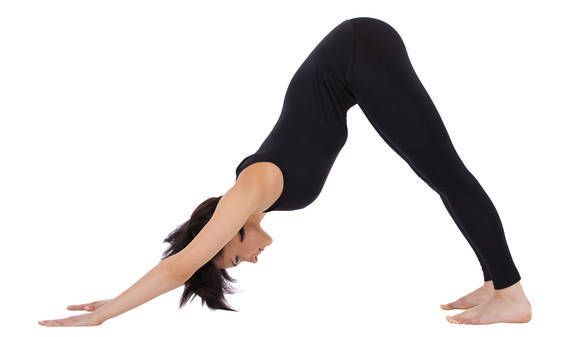The term hatha refers to one of the branches of the yoga tradition, under which many other styles and types of yoga that we know today fall under. Its practice is traditionally holistic in nature, involving not only the physical aspect of doing asanas or poses, but also breathing, purification, and meditation. However, Hatha yoga as it is known today and taught in most studios, generally means using a classical approach to teach students the fundamental poses and breathing exercises done in yoga.
There are no postures or exercises that can be dubbed specifically as Hatha yoga poses, because as mentioned, modern usage of the term "Hatha yoga" means doing the traditional / classical/ basic approach. To give you a better idea, here are some of the poses commonly done in the Hatha yoga classes being taught today.
Lotus Pose
Many yoga classes start with this pose because it creates an ideal physical context for learning breathing exercises and yoga meditation techniques. The Lotus pose involves sitting Indian-style with your back straight and your mind as calm and quiet as you can make it. Remember, focus and concentration are just as important in Hatha yoga poses as being able to physically do them properly.
Camel Pose
This posture works great for relieving tension and pain in the lower back, and can help prevent slipped discs and digestion problems. Hatha yoga poses like this one fall under the general category of backbends, which is known to improve or correct spinal alignment. When doing the Camel pose, it's important to SLOWLY lower yourself backward (and not do a quick drop) so your hands can reach the soles of your feet.
Rabbit Pose
The Rabbit pose involves kneeling on your mat with your body bent over towards the floor, your head touching the mat, and your arms outstretched behind you with your hands clasped. This pose gives a good back stretch, and elongates and tones the arms especially if you try to bring your clasped hands as high up as possible.
Corpse Pose
This is among the Hatha yoga poses that are restorative in nature, and are typically used either mid-session or to signal the close completion of an exercise sequence. With the Corpse pose, what you do is lie on your back, your arms relaxed at the sides, and just your legs outstretched and spread at hip-width distance. Let your muscles relax and fall onto the floor as you breathe deeply in and out to normalize your breathing patterns.
Mule Kick Pose
To do the Mule Kick, get down on all fours and simultaneously lift one leg, stretch it out back, and raise the opposite arm. At this point, your body should form a straight line from your fingertips down to the tips of your toes. This pose works multiple muscle groups including the glutes and core, while improving your sense of focus and balance. If you experience discomfort or pain on your knee, you can place a towel under it for added cushion.
These are just some examples of the basic poses that you will learn in Hatha yoga. If you want to learn the basics of the different branches or aspects of yoga, Hatha is one of the types of yoga you may want to consider when you sign up for your first class.


